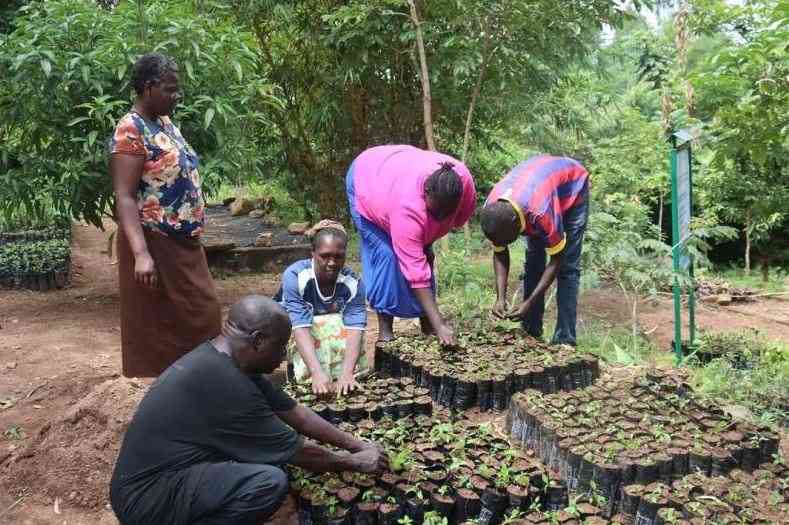Maragoli Hills blossom after years of destruction

Maragoli Hills, one of the largest and most critical forested landscapes in Vihiga County, is undergoing a hopeful transformation through a growing partnership between the local community, the county government, and non-governmental organizations.
Once devastated by decades of deforestation and neglect, the 1,000-acre forest is now at the center of a community-driven restoration effort.
This initiative focuses on education, apiculture (beekeeping), sustainable livelihoods, and a shift in public mindset—particularly among communities that once resisted conservation.
For years, unchecked logging and illegal cultivation fragmented the once-dense forest into scattered patches. The destruction, which began in the early 1990s, targeted one of Western Kenya’s vital water towers. Initial resistance from locals, fueled by fears of eviction and lost farmland, stalled early restoration efforts.
Richard Misigo, Secretary of the Community Forest Association (CFA), traces the turning point to 2010, when community leaders took ownership of the forest’s future.
He explained that commercial loggers—licensed by the then-provincial administration—were the primary drivers of destruction, not local residents.
“The locals only joined in after seeing the damage done by commercial millers. The licenses allowed logging without any reforestation plan. In 2010, we launched the CFA to restore the forest,” said Misigo.
Attitudes shifted through sensitisation campaigns and exposure to successful community forestry models.
“Exchange visits to other Community Forest Associations showed the long-term value of conservation. This changed minds and boosted participation,” he added.
Initially, even newly planted seedlings were uprooted by wary residents. But over the past five years, perceptions have transformed. Many now see the forest as a shared responsibility, especially after realizing restoration doesn’t mean evictions or land seizures.
So far, more than 150 acres of indigenous trees have been planted.
A key catalyst? Apiculture. Beekeeping has drawn locals into conservation by tying tree protection to tangible economic benefits.
You may also like...
Diddy's Legal Troubles & Racketeering Trial

Music mogul Sean 'Diddy' Combs was acquitted of sex trafficking and racketeering charges but convicted on transportation...
Thomas Partey Faces Rape & Sexual Assault Charges

Former Arsenal midfielder Thomas Partey has been formally charged with multiple counts of rape and sexual assault by UK ...
Nigeria Universities Changes Admission Policies

JAMB has clarified its admission policies, rectifying a student's status, reiterating the necessity of its Central Admis...
Ghana's Economic Reforms & Gold Sector Initiatives

Ghana is undertaking a comprehensive economic overhaul with President John Dramani Mahama's 24-Hour Economy and Accelera...
WAFCON 2024 African Women's Football Tournament

The 2024 Women's Africa Cup of Nations opened with thrilling matches, seeing Nigeria's Super Falcons secure a dominant 3...
Emergence & Dynamics of Nigeria's ADC Coalition

A new opposition coalition, led by the African Democratic Congress (ADC), is emerging to challenge President Bola Ahmed ...
Demise of Olubadan of Ibadanland
Oba Owolabi Olakulehin, the 43rd Olubadan of Ibadanland, has died at 90, concluding a life of distinguished service in t...
Death of Nigerian Goalkeeping Legend Peter Rufai

Nigerian football mourns the death of legendary Super Eagles goalkeeper Peter Rufai, who passed away at 61. Known as 'Do...




